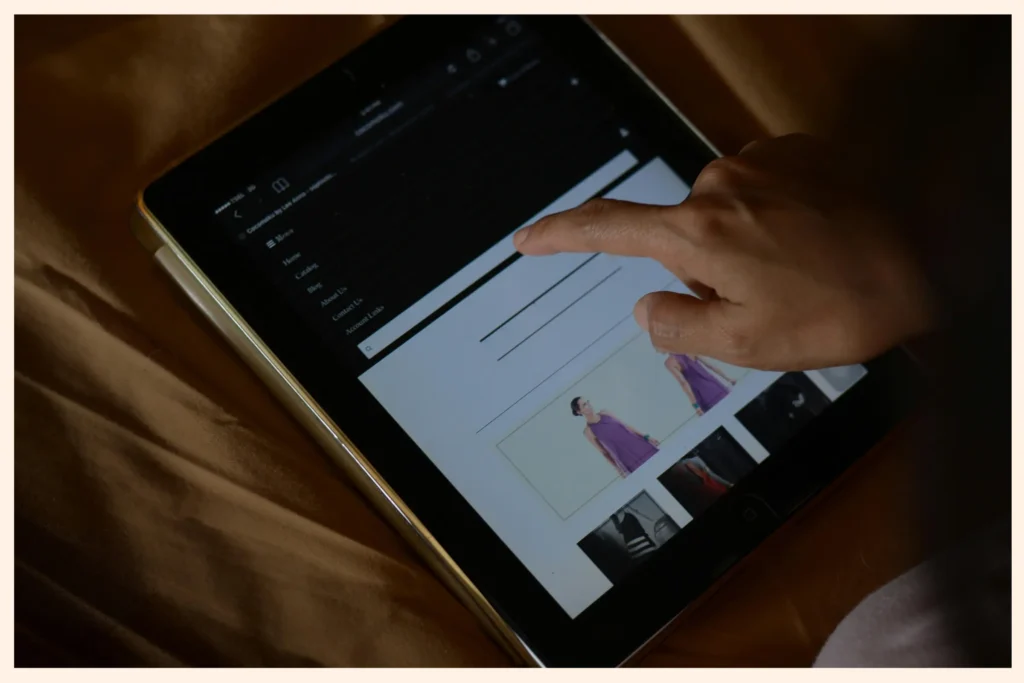In the fast-paced world of fashion e-commerce, consumer preferences evolve rapidly, and new trends emerge seemingly overnight. To thrive in this competitive landscape, fashion businesses need a powerful weapon in their arsenal: trend forecasting.

What is Fashion Trend Forecasting?
Trend forecasting is the art and science of predicting future trends in fashion. It involves analyzing various data sources, including social media sentiment, runway shows, consumer behavior patterns, and economic indicators, to identify emerging trends with potential to shape the fashion landscape.
Why is Trend Forecasting Important for Fashion E-commerce?
Here’s how accurate trend forecasting empowers fashion e-commerce businesses:
- Product Development: Identify and develop products that align with upcoming trends, ensuring your offerings resonate with your target audience.
- Inventory Management: Forecast future demand for specific styles and colors, preventing stockouts and overstocking of outdated items.
- Marketing & Sales Strategies: Craft targeted marketing campaigns and promotions that capitalize on the excitement surrounding emerging trends.
- Competitive Advantage: Become a trendsetter rather than a follower, attracting trend-conscious consumers and establishing your brand as a forward-thinking leader.
Methods for Fashion Trend Forecasting
While trend forecasting isn’t an exact science, several methods and resources can equip you with valuable insights:
- Fashion Week Analysis: Closely follow major fashion weeks in New York, Paris, Milan, and London. Observe runway trends, analyze designer collections, and identify recurring themes in colors, silhouettes, and fabrics.
- Social Media Listening: Utilize social media listening tools to monitor conversations surrounding fashion trends on platforms like Instagram, TikTok, and Pinterest. Look for emerging trends gaining traction, analyze user-generated content featuring specific styles, and identify influencers shaping fashion conversations.
- Industry Reports & Publications: Subscribe to fashion industry reports and publications from reputable sources like WGSN, Euromonitor International, and The Business of Fashion. These resources provide valuable insights into global and regional fashion trends, consumer preferences, and economic factors influencing fashion choices.
- Fashion Trade Shows & Events: Attend fashion trade shows and events relevant to your target market and product category. These events showcase upcoming collections, provide opportunities to network with industry professionals, and offer a glimpse into emerging trends.
- Consumer Trend Reports: Utilize consumer trend reports specific to the US and Canada to better understand the evolving preferences of your target audience. Reports from firms like Nielsen, Edelman Intelligence, and Trend Hunter can offer valuable insights into consumer behavior, values, and purchasing habits.
Don’t solely rely on global trends. Consider the specific tastes and preferences of your target audience. Adapt international trends to your local market to ensure your offerings resonate with consumers.

Decoding the Fashion Forecast
While data and reports provide a strong foundation, successful trend forecasting requires human intuition and an understanding of the cultural context.
Here are some additional considerations:
- Seasonality: Fashion trends in the US and Canada are heavily influenced by distinct seasonal changes. Consider how winter wear trends in Canada might differ from those in warmer regions of the US.
- Cultural Diversity: Both the US and Canada boast rich cultural diversity. Be mindful of how cultural influences shape fashion preferences within different segments of your target audience.
- Sustainability: The demand for sustainable fashion is rising in both the US and Canada. Consider incorporating eco-friendly materials and production practices into your offerings to align with this growing trend.
Putting it all Together: Developing a Trend Forecasting Strategy
Here’s a step-by-step approach to develop a robust trend forecasting strategy for your fashion e-commerce business:
- Define Your Target Audience: Develop a clear understanding of your ideal customer’s demographics, psychographics, and fashion preferences.
- Identify Your Data Sources: Select a combination of data sources like runway shows, social media listening tools, industry reports, and consumer trend reports relevant to your target market.
- Establish a Monitoring Process: Regularly monitor your chosen data sources, identify recurring themes and emerging trends, and analyze the potential trends.
- Develop a Trend Calendar: Based on your analysis, create a trend calendar that outlines anticipated trends for upcoming seasons. This calendar can guide your product development, marketing, and inventory management strategies.
- Stay Agile & Adapt: Fashion trends can evolve rapidly. Maintain a flexible approach and continuously refine your forecasting strategy based on new data and market feedback.
Once you’ve identified key trends, it’s time to translate them into action:
- Product Development: Incorporate trending colors, styles, and silhouettes into your product line. Consider offering capsule collections or limited-edition items to capitalize on specific trends.
- Marketing & Sales Strategies: Craft marketing campaigns that highlight your trend-forward offerings. Utilize social media influencers who embody the emerging trends and target your messaging to specific segments within your audience who might be most interested.
- Inventory Management: Forecast demand for trend-driven products and adjust your inventory levels accordingly. This proactive approach helps you avoid stockouts while minimizing the risk of overstocking with outdated items.
By implementing a strategic approach to trend forecasting, fashion e-commerce businesses can gain a significant advantage in the competitive market.
Remember, the key lies in combining data analysis with a deep understanding of your target audience and the unique cultural landscape.
About the author(s):
Natasha is our Social Media Manager, a law student, and marketing enthusiast. She loves strategizing different methods to get results. A big fan of startups and their psychological aspects. She loves to travel and interact with locals to know the history of those places. She lives in Jaipur, India.